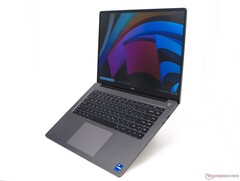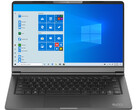Very early in the test, we noticed that something wasn't quite right with the cooling solution in our RedmiBook. One of the cores in the Intel Core i7 became way too hot. And in fact, the heatsink was not sitting completely firmly on the CPU. We can't say for sure whether this was a transport damage, a hidden factory defect, or consequence of the previous owner's tinkering. After a minor repair, several benchmarks were run a second time, and once again we observed problems with the device's performance. Although the processor no longer experienced thermal throttling, the scores of some benchmarks became worse compared to those before the repair.
The reason for this was the Power Level 1 value, which is the permitted long-term workload of the processor. The manufacturer can apparently configure this between 25 watts and 45 watts for the Intel Core i7-11370H used here (according to Intel, from 28 watts to 35 watts.) The energy management in the Xiaomi laptop adjusts the PL1 value to the general operating parameters. If the laptop is running on battery power, PL1 is set to 25 watts. When the device is plugged in and the battery is charging, it is set to 28 watts. Sometimes the PL1 value is adjusted to the current cooling performance. In that case, the processor is allowed to operate at an average of 35 watts. However, the problem sometimes is that PL1 simply gets locked at a low value. This behavior is unpredictable. Depending on the operating mode, this resulted in average processor clock speeds between 2.8 GHz and 3.6 GHz in the Cinebench R15 multi-core endurance test. Xiaomi doesn't provide any information on this behavior and even states that the processor runs at 3.3 GHz in the long-term. However, at 28 watts, the processor runs at 3.1 GHz under prolonged load.
There was also criticism concerning the webcam used and the Nvidia graphics card. Nevertheless, the Xiaomi RedmiBook Pro 15 was ultimately able to achieve a quite positive result in the test, since it was able to perform well in the benchmarks despite its shortcomings; as a result, it's a real bargain at just over 1,000 Euros (~$1,191).


















